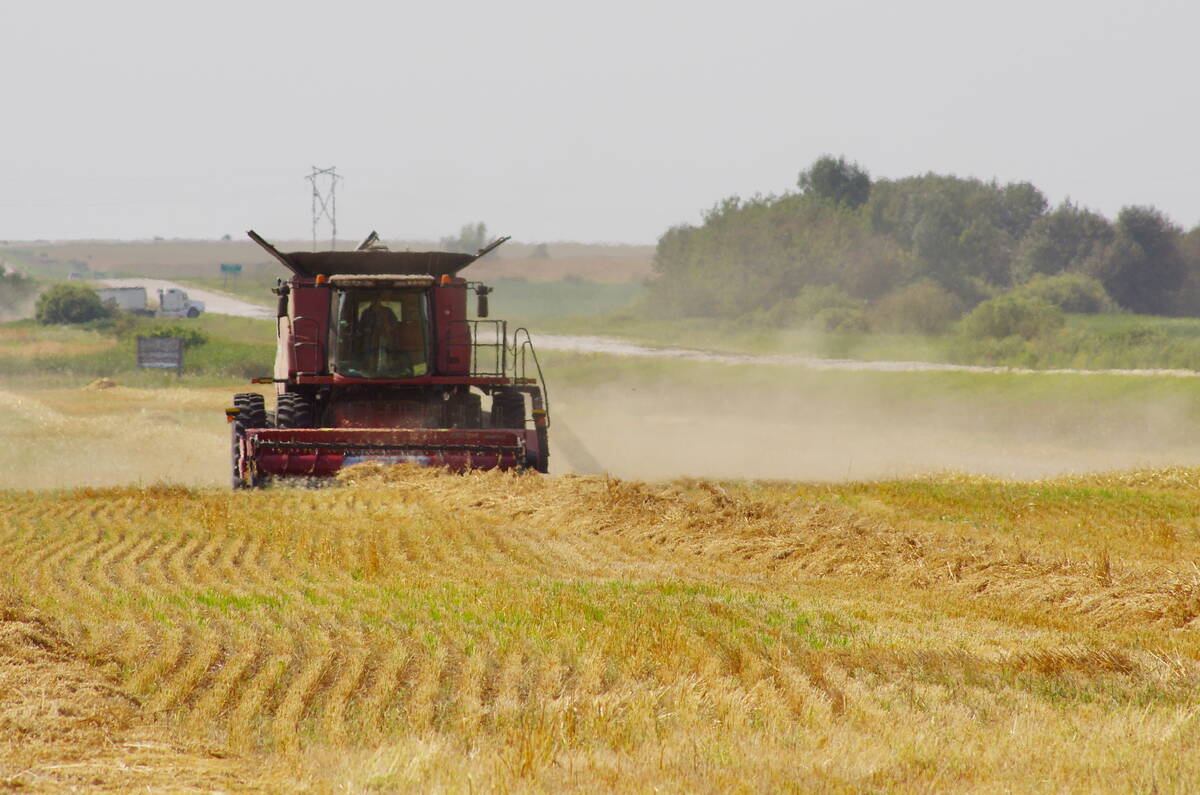Saskatchewan farmers will be sitting on more undelivered grain than their neighbours in Manitoba and Alberta by the end of the 2013-14 crop year.
That’s because the majority of grain being shipped east to Thunder Bay or west to Vancouver and Prince Rupert is being shipped from elevator locations in Manitoba and Alberta, says the executive director of the Western Grain Elevators Association.
By virtue of their location and distance to port, Saskatchewan elevators can expect fewer grain cars, less reliable rail service and fewer outbound grain shipments than elevators in other prairie provinces, said Wade Sobkowich.
Read Also

Herbicide resistance sprouts in Manitoba’s wild oats
Farmers across Manitoba this fall are gearing up for the latest salvo in what, for many, has become a longtime battle to beat out wild oats.
“If we have a carryout at the end of the (2013-14 crop) year of approximately 23 million tonnes … Saskatchewan is going to be sitting on most of that carryout,” Sobkowich said.
“Not only are the railways picking the corridors where grain is being shipped, but they are also, to a large extent, picking the locations that the trains get spotted at because of (car) turn-around times.”
“They’re picking locations in Alberta because of the quicker turn-around times (to the West Coast) … and they’re picking locations in Manitoba because of the turnarounds at Thunder Bay … but in Saskatchewan many locations are still having difficulty getting service.”
Poor rail service to Saskatchewan elevators is the latest challenge facing farmers and grain companies attempting to move the largest grain crop in Canadian history.
In early March, Ottawa imposed an order in council requiring Canada’s major railway companies, Canadian National and Canadian Pacific, to move one million tonnes of grain per week or risk fines as high as $100,000 per day.
The federal order did not specify where the grain must be sourced or where it must be unloaded.
Sobkowich said elevators in Manitoba and Alberta have been receiving more trains and better service than elevators in Saskatchewan.
In addition, deliveries of western Canadian grain to the United States are still falling well short of industry expectations.
“We are getting … a decent amount of capacity to the West Coast … and we’re getting decent service to Thunder Bay, but … we’re not getting any capacity to speak of to the United States and we’re not getting very much capacity to Eastern Canada.”
Movements of soybeans, primarily in Manitoba, have been cut off completely, Sobkowich added.
“The railways are refusing to move soybeans … because soybeans aren’t listed as a Schedule 2 grain so they’re not covered under the order in council,” he said.
Meanwhile, emergency legislation aimed at ensuring better rail service to the grain industry was expected to receive Parliamentary approval late this week or early next week.
The Fair Rail for Grain Farmers Act, also known as Bill C-30, hit a speed bump last week after the speaker of the House of Commons ruled that proposed amendments to the bill were “null and void.”
The amendments in question would have allowed the Canadian Transportation Agency to assess financial damages caused by poor rail service and award compensation to shippers that incurred unexpected costs.
The bill was sent back to the agriculture committee earlier this week and was reworked under the assumption that the CTA’s regulatory authority will be expanded to include the assessment of financial damages caused by poor rail service and the ability to order compensatory damages, from railways to aggrieved shippers.

















